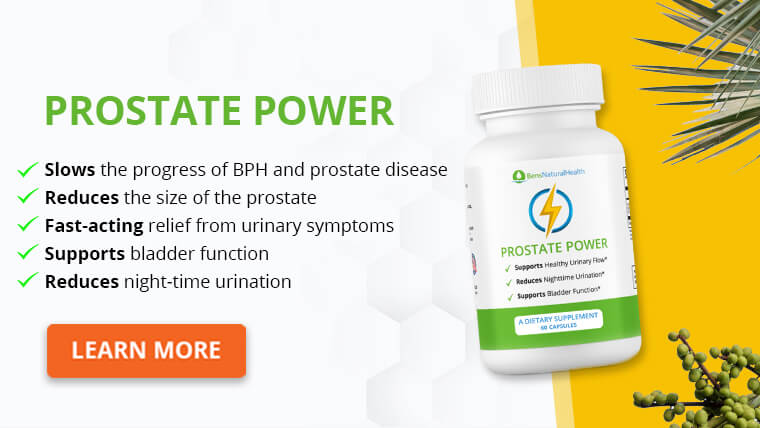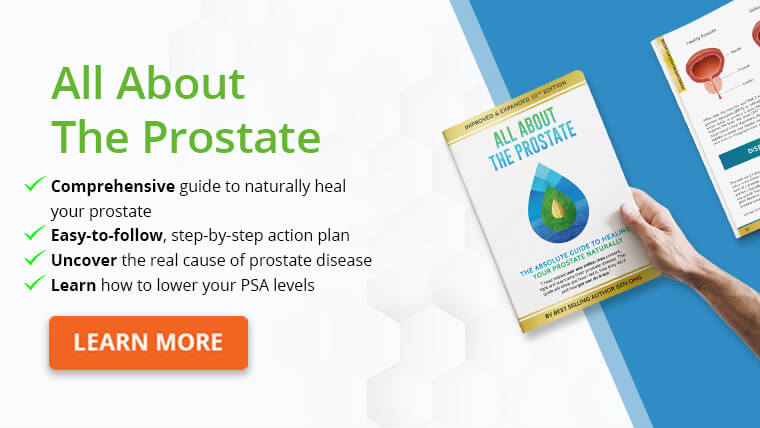- What is finasteride?
- What is minoxidil?
- How do finasteride and minoxidil help treat hair loss?
- Benefits of finasteride vs minoxidil
- What are the differences between finasteride and minoxidil?
- What are the similarities between finasteride and minoxidil?
- Which is more effective, finasteride or minoxidil?
- Which has fewer side effects, finasteride or minoxidil?
- Which is cheaper, finasteride or minoxidil?
- Can you take finasteride and minoxidil together?
- Conclusion
- Source
Trying to look for a solution for hair loss, most people turn to shampoo, conditioner, and hair-thickening products.
While they are effective in some cases, these are usually temporary fixes.
Finasteride and minoxidil are used long-term, but if you apply them as instructed, there’s a high chance of noticeable changes after a few months.
But is there a difference between them?
In this article, we’ll look at two of the market’s most popular hair loss treatments: finasteride and minoxidil.
We’ll compare finasteride vs minoxidil in terms of their side effects, effectiveness, price, and more.
Also, can you use finasteride and minoxidil together? We will answer that and many other questions.
Get Your FREE PSA Lowering Diet Plan!
- Naturally lower PSA levels
- Reduce nighttime trips to the bathroom
- Enjoy better bladder control and urine flow
What is finasteride?
Finasteride is a drug that treats male pattern baldness (androgenic alopecia) by inhibiting the conversion of testosterone to dihydrotestosterone (DHT). It belongs to the family of 5-alpha reductase inhibitors, which inhibit the enzyme that activates testosterone.
DHT is the primary androgen responsible for body hair growth in the pattern we usually see in males, as well as other sex characteristics. However, these hormones may also attack and destroy hair follicles when there’s too much of it.
Finasteride is commonly used for male pattern baldness but can treat hair loss caused by other conditions such as female-pattern baldness, androgenic alopecia, and alopecia areata.
It’s taken orally, and there are also creams, and they all modify levels of male hormones known as androgens, which control the hair growth cycle. Besides stopping hair loss, finasteride may also promote new hair growth.
What is minoxidil?
Minoxidil is a topical solution used to treat hair loss. It is designed specifically for men and works by thickening the hair and slowing the rate of hair loss.
It is intended to be used on the scalp, but some patients have also had good results using minoxidil to speed up hair growth in the beard.
Minoxidil was originally a high blood pressure treatment and belongs to the family of peripheral vasodilator drugs.
However, similar to what happened with Viagra, the side effects of minoxidil turned out to be more useful than its original purpose. Thus, now most people use minoxidil for hair loss and not as a hypertensive drug.
It works by stimulating the hair follicles that are in the growth phase. This increases blood flow to the scalp, resulting in thicker, healthier hairs.

How do finasteride and minoxidil help treat hair loss?
Finasteride and minoxidil are both used to treat hair loss and are both approved by the FDA. But the mechanism of action is radically different:
- Finasteride (Propecia): Finasteride is an oral drug that inhibits an enzyme called 5-alpha reductase. It is most commonly used to treat male-pattern baldness (androgenic alopecia), but it may work in females, too, especially if they have hirsutism.
- It helps treat hair loss by blocking DHT (a male hormone) from shrinking the hair follicles and activating the hair growth process. This prevents further hair shedding from occurring.
- Minoxidil (Rogaine): Minoxidil is a topical drug that stimulates hair follicles to grow thicker hair. It is most commonly used to treat male-pattern baldness, but it is also sometimes used to treat female-pattern baldness.
- Rogaine works directly in the hair follicle. It increases the blood and oxygen flow to the hair follicles, causing them to grow thicker.
Benefits of finasteride vs minoxidil
When you choose hair loss treatment, you should consider its pros and cons. So, if you’re trying to decide between finasteride vs minoxidil, which one is more likely to benefit in your case?
The benefits of topical minoxidil include:
- It increases the hair density level in androgenic alopecia, and this is the only FDA-approved indication.
- It can also help patients with alopecia areata, especially when combined with corticosteroids.
- Minoxidil minimizes hair loss and accelerates regrowth after alopecia triggered by chemotherapy.
- It reduces the risk of hair loss after hair transplants. You should use it before and after the hair transplant procedure.
- It has antifibrotic action, which makes minoxidil a potential ally in cases of scarring alopecia.
- It also benefits patients with hereditary causes of alopecia, such as monilethrix and hypotrichosis.
The benefits of oral finasteride include:
- It is very effective in cases of androgenic alopecia and is FDA-approved for this use.
- It inhibits a type of 5-alpha reductase located in the hair follicle, reducing its hormonal side effects.
- It’s also effective to shrink the prostate gland and prevent further growth in benign prostatic hyperplasia.
- Despite being an off-label use, finasteride also helps women with idiopathic hirsutism, especially those with polycystic ovary syndrome.
What are the differences between finasteride and minoxidil?
Finasteride is taken orally. It is typically taken once a day, at the same time each day. The treatment plan results start to be noticeable at 6 to 12 months.
Since minoxidil is a topical drug, it is applied directly to the hair. It is usually used twice daily with a message to the application site. However, a scalp massage is not required and may not make a big difference.
The results are more noticeable after four months, but some patients start to see changes after one or two months.
Besides the mode of application and the time it takes to see the first results, minoxidil and finasteride have a different mechanisms of action.
As mentioned above, finasteride inhibits an enzyme that turns testosterone into DHT. Minoxidil stops hair loss by producing vasodilation in the scalp, increasing blood flow, and nourishing the hair follicles to stimulate hair growth.

What are the similarities between finasteride and minoxidil?
Finasteride and minoxidil are hair loss treatments used to restore hair growth in men. Both treatments have adverse side effects, including severe birth defects, when taken by pregnant women. Thus, neither is recommended during pregnancy.
Another similarity is that neither requires dose adjustments in patients with kidney or liver insufficiency.
Either minoxidil or finasteride can be helpful for cases of male pattern baldness, receding hairline, and other conditions. However, they are not equivalent or interchangeable.
Finasteride and minoxidil have different mechanisms of action, as mentioned above. Finasteride targets DHT, while minoxidil targets blood vessels.
The limitations of finasteride and minoxidil are also similar. They may not be useful when the trigger of hair loss is associated with hypothyroidism, stress, and other hair loss disorders.
Which is more effective, finasteride or minoxidil?
Finasteride and minoxidil are two of the most commonly used hair loss treatments. Both are FDA-approved for androgenic alopecia, but which treatment is better in terms of efficacy?
Finasteride
This is a very effective treatment but should be taken regularly and for a long time to see the results. In a 10-year study on the Japanese population, continuous use of finasteride in males resulted in 91 to 99% improvement in disease progression.
Minoxidil
Minoxidil works by preventing hair loss and restoring hair growth. It should be used for a long time, but the results are somewhat faster than finasteride.
Efficacy depends on the presentation of the minoxidil you’re using. A 5% concentration is more effective than a 2% concentration in all studies.
It doesn’t matter if you apply the drug in foams, lotions, or creams. The effectiveness is the same.
So, is minoxidil enough on its own? In most cases, it is, but you must keep applying the drug twice a day for a very long time to see results.
A study compared minoxidil vs finasteride in patients with androgenic alopecia and confirmed that minoxidil works better in the medium term. The results are more noticeable in a shorter period. Compared to that, finasteride takes longer to act, but it is also very effective.
Finasteride and minoxidil have pros and cons, and it is essential to discuss the treatment options with your doctor before deciding which treatment is right for you.
Which has fewer side effects, finasteride or minoxidil?
Finasteride and minoxidil both have similar contraindications.
For example, both treatments can trigger severe birth defects when taken by pregnant women. If you take either of these hair loss medications, take precautions to avoid pregnancy, and stop taking it if you’re actively searching for pregnancy or have a positive pregnancy test.
You should also consult your doctor before taking finasteride or minoxidil, as you may not be a good candidate for one of these treatments depending on your gender and the type of hair loss you have. Your doctor can help you determine the best treatment option for you.
Finasteride and minoxidil are structurally and chemically different, however, and have different side effects:
Minoxidil side effects
Most men do not experience side effects when using minoxidil, but some people may experience skin irritation or rashes.
The main side effect of minoxidil has to do with its topical application, which may include a burning sensation in the skin, erythema or redness, discomfort, allergic contact dermatitis, itchy skin or pruritus, and exacerbation of seborrheic dermatitis.
Some patients may also experience a side effect known as minoxidil-induced telogen effluvium. In such cases, they would experience hair shedding instead of hair growth, but this side effect is not particularly common.
Finasteride side effects
Finasteride is a 5-alpha reductase inhibitor. It works by preventing the testosterone hormone from being converted to DHT, which may trigger side effects associated with sexual dysfunction.
For example, some patients may experience erectile dysfunction or a loss of libido. Others report a reduced ejaculatory volume or have gynecomastia after starting their treatment with finasteride. These sexual side effects may also have a psychological burden.
Additionally, finasteride may trigger orthostatic hypotension (low blood pressure triggered by a change in body position), especially in patients taking alpha-blockers. Other side effects of finasteride include skin rash, rhinitis, dyspnea, weakness, and dizziness.

Which is cheaper, finasteride or minoxidil?
Finasteride and minoxidil are both effective in treating hair loss, but which one is cheaper? The answer to this question depends on factors such as the brand name, the dosage, and the form of each medication.
However, the cost of minoxidil is usually lower than finasteride. You may spend around $10 to $15 every month on your minoxidil treatment compared to $50 to $75, which is the usual monthly cost of finasteride.
Moreover, minoxidil is often sold as an over-the-counter drug because minoxidil topical application reduces the risk of side effects. Finasteride pills are prescription medications, meaning you must consider the extra expense of a doctor’s consultation.
Can you take finasteride and minoxidil together?
Some people use finasteride and minoxidil at the same time with excellent results. Finasteride and minoxidil are both hair loss treatments available as oral pills and topical creams or lotions, respectively.
There is no evidence that taking finasteride and minoxidil simultaneously causes additional side effects or drug interactions. They have different mechanisms of action, and combining them is a solid rationale for better results.
When finasteride and minoxidil are used together, they work in different ways to prevent further hair loss and promote hair regrowth. However, it is important to highlight that both minoxidil and finasteride have side effects. Adding both drugs combines the risk of side effects from each.
A recent systematic review and meta-analysis evaluated studies where patients took oral finasteride and applied topical minoxidil to see how it was compared to monotherapy. They showed that people taking both medications had significantly better outcomes than those taking finasteride or minoxidil alone.
So, can you use finasteride and minoxidil at the same time? Yes, you can, and it might hold promising results, according to recent studies. However, a doctor should recommend this combination after considering your case.
In this case, it would be best to use finasteride and minoxidil as a topical combination, and there are new formulations with minoxidil plus finasteride that holds promising results in clinical trials.
Conclusion
If you’re about to start a hair loss treatment, minoxidil and finasteride are probably on the list of options. But how effective is minoxidil for hair growth, and how does it compare with finasteride? Is it best to use minoxidil for male pattern hair loss and baldness? Does finasteride work better with minoxidil?
Both treatments have similar applications in hair loss, but their mechanisms of action are radically different. They also require a long time to act, so if you think finasteride and minoxidil are not working, you probably need more time for them to act.
Finasteride and minoxidil are available in tablet form and shampoo or lotions, respectively. In some cases, they can be used in combination to prevent hair loss. However, you will need hair loss prescriptions to use both because the former is only sold on a doctor’s advice.
Explore More








